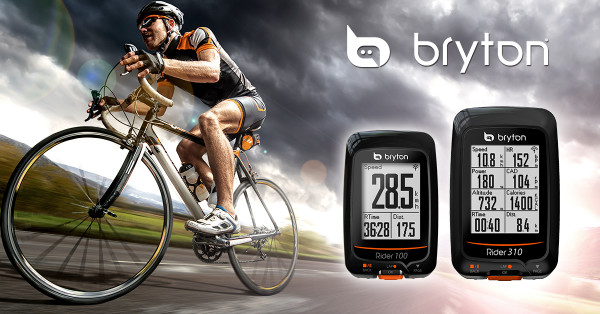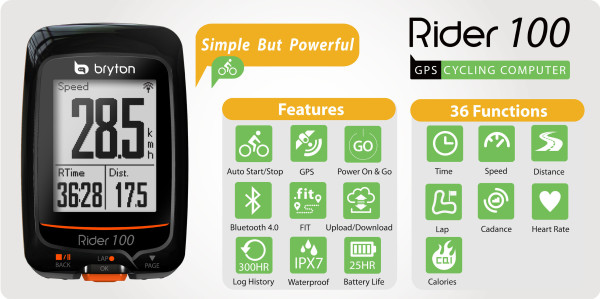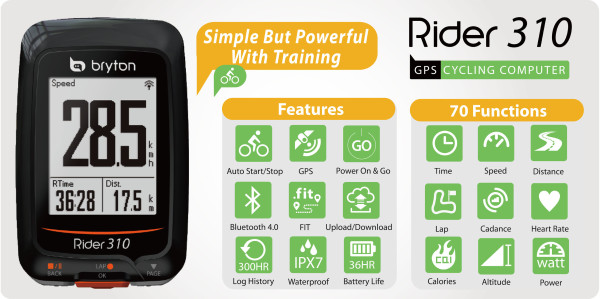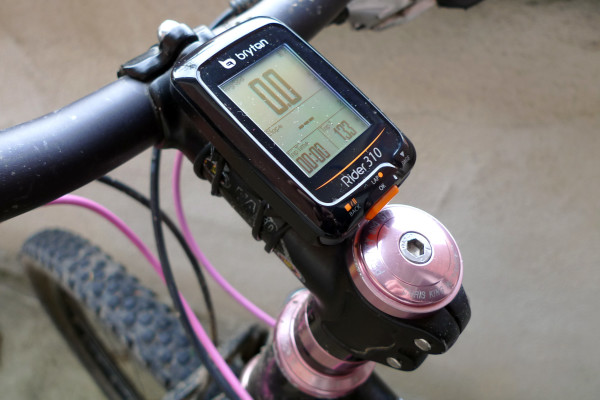The newly introduced Rider 100 and Rider 310 from Bryton are a big step up from their previous offerings. They deliver simple, easy-to-use ride tracking functionality and at a price that is hard to beat. While they aren’t the most advanced GPS cycling computers on the market (they don’t include map displays while riding for example) they aim to deliver seamless functioning that lets you enjoy the ride. As their CEO Samuel Wang said “You focus on the sport to enrich your life, and we focus on how to make your life easier without any sacrifices…
More powerful than their pricepoint would suggest, the Rider 100 collects up to 36 data points and intuitively and somewhat automatically displays them, including time, distance, speed, lap, calories, cadence, heart rate and lactate threshold heart rate. At just $70 for the basic 100, it is offers pretty solid value.
The Rider 310 adds even more, up to 70 data points, including temperature, altitude (with an on-board barometer), and power data. It sells for just $100 in its basic configuration with just the computer and a single mount, making it one of the best values on the market for collecting power data. Bryton sells a number of accessory packs to add in cadence, speed, or HR measurement. With ANT+ connectivity it will connect to many sensor you already are using, but its Bluetooth 4.0 seems to only be for forthcoming mobile app connections.
Where they don’t have mapping, they make up in data collection duration. The Rider 100 has a 25hr run time, and the 310 takes that up to 36hr. Files are also saved in the popular .FIT format, so it is easy to upload the activities to all of the popular ride tracking sites.
While the wealth of data they collect is great, there’s a lot to be said just for how easy the new Riders are to use. The intuitive functionality includes features like the Power On & Go mode with automatic start/stop recording so you will never forget to record your ride. It also semi-automatically configures the data fields on each screen, so if it detects a power meter it will show a power screen, but when it isn’t there you don’t have to scroll through a blank page to see your other data. (You also can manually configure the data fields on the 7 data pages, as well.) And not to be underestimated, if you buy one of the accessory packs, they come pre-paired so you don’t have to wade through menus with just three buttons to setup a heart rate monitor or speed/cadence sensor.
In the US the new Rider 100/310 are now available through KHS retailers and ACS retailers in Canada. We’ve been working with a 310 for a few weeks now, and have been really happy with it so far. Keep an eye out for a detailed review in the coming weeks.



